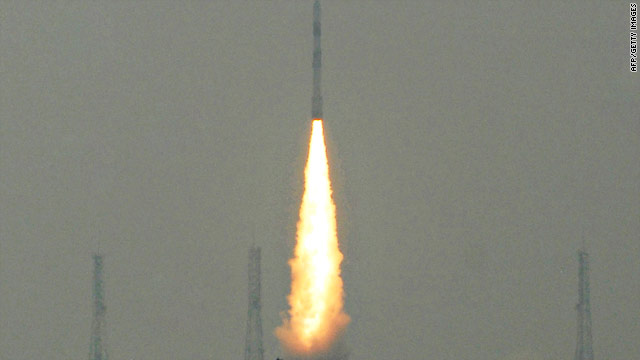
New Delhi, India (CNN) -- India successfully launched five satellites into orbit Monday, one of them a mini-spacecraft built by students, space officials said.
The main payload was a remote-sensing satellite -- CARTOSAT-2B -- which the country's space agency said would be used in infrastructure programs because of its capability to take high-resolution images of the Earth.
Other smaller devices comprised satellites from a Canadian university, Algeria and STUDSAT, a light-weight rocket made by Indian engineering students, the Indian Space Research Organization said.
Monday's launch came two months after an Indian satellite powered for the first time by a home-made cryogenic engine failed in what was seen as a setback to the country's space ambitions.
ISRO spokesman S. Satish told CNN that scientists have identified the causes behind April's misfire. India now aims to test the same domestically built technology within a year, he said.
The South Asian nation has an expansive space program.
In 2008, India sent its first unmanned mission to the moon, called Chandrayaan-I.
Chandrayaan-1, meaning moon craft, dropped a TV-sized probe on the lunar surface, completed more than 3,400 orbits and met most of its scientific objectives in 312 days before vanishing off radars abruptly last year, according to the space agency.
The satellite carried payloads from the United States, the European Union and Bulgaria. One of its aims was to search for evidence of water or ice and identify the chemical composition of certain lunar rocks.
The Chandrayaan-1 mission came to be seen in India as the 21st century Asian version of the space race between the United States and the former Soviet Union -- but this time involving India and China.
China launched a manned space flight in October 2003, becoming the third nation in the world to put a person into orbit. India has not launched any manned space flights.
Satish said the Indian agency also was planning to launch a second version of Chandrayaan in 2013.
India held its first rocket launch from a fishing village in southern India in 1963.
Now, the South Asian nation lists more than 60 events as "milestones" in its space program, which includes the successful use of polar and geosynchronous satellite launch vehicles.
Indian scientists say their country has the world's largest constellation of remote-sensing satellites.These satellites, according to the Vikram Sarabhai Space Center, capture images of the Earth used in a range of applications -- agriculture, water resources, urban development, mineral prospecting, environment, forestry, drought and flood forecasting, ocean resources and disaster management.
Another major system, or INSAT, is used for communication, television and meteorology.

No comments:
Post a Comment